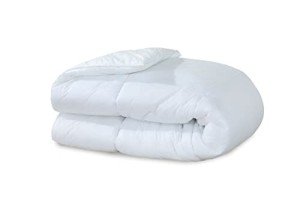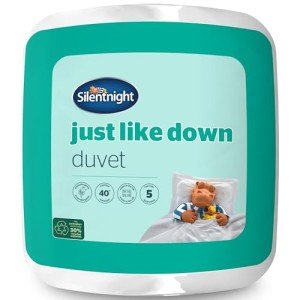In the realm of home textiles, a cozy double duvet stands out as a staple item that combines luxury with practical functionality. Known for its ability to provide warmth and comfort, a double duvet is a versatile bedding accessory suitable for every season. This guide delves into the benefits of owning a double duvet, the different materials available, tips for selecting the perfect one, and how to care for it to ensure it lasts for years.
The Benefits of a Double Duvet
Choosing a double duvet over other bedding options offers numerous advantages, such as:
- Versatility: A double duvet can accommodate a wide range of sleeping preferences, making it suitable for singles as well as couples sharing a bed.
- Layering Options: Duvets are ideal for layering with other bedding, allowing for easy adjustments of warmth depending on the season.
- Ease of Maintenance: Unlike traditional blankets or comforters, duvets are easier to wash and maintain, as they can be removed from their covers.
- Temperature Regulation: Many double duvets are designed to regulate temperature, providing comfort without overheating.
- Aesthetics: Duvets come in various styles, colors, and patterns, making it easy to coordinate with any bedroom décor.
Selecting the Right Material
When it comes to the construction of the double duvet, the material significantly impacts comfort and warmth. Here are some common materials used:
| Material | Pros | Cons |
|---|---|---|
| Down | Lightweight, excellent insulation, soft | Can be expensive, may cause allergies |
| Feather | Firm support, good insulation | Heavier than down, lacks loft |
| Synthetic | Hypoallergenic, affordable, easy care | Often less breathable, can trap heat |
| Wool | Naturally temperature regulating, durable | Heavier, requires careful washing |
| Cotton | Breathable, soft, machine washable | Less insulating than other materials |
Summary of Pros and Cons
- Down offers luxury but can evoke allergies.
- Feather provides hardiness but weighs more.
- Synthetic materials are practical yet may be less breathable.
- Wool presents durability but needs careful maintenance.
- Cotton is user-friendly but potentially offers less warmth.
Choosing the Perfect Double Duvet
Selecting the right duvet involves understanding personal preferences and lifestyle needs. Here are some factors to consider:
- Warmth Level: Look for a duvet’s tog rating, which indicates warmth. A lower tog is suitable for summer, while a higher tog is preferable in winter.
- Allergies: Opt for hypoallergenic materials if allergies are a concern.
- Budget: Consider how much you are willing to spend. Quality duvets range from affordable options to luxury items.
- Care Instructions: Ensure the duvet can be maintained according to your lifestyle; some may require dry cleaning while others are machine washable.
- Aesthetic Preferences: Choose colors and patterns that suit your bedroom décor.
Caring for Your Double Duvet
To ensure the longevity of your double duvet, following proper care guidelines is crucial. Here’s a list of dos and don’ts for maintaining your duvet:
Dos:
- Wash Regularly: Check care labels for the washing guidelines, but aim to clean your duvet every six months.
- Use a Duvet Cover: Protect your duvet with a cover, which can be washed frequently, reducing the need for full washing.
- Air It Out: Take your duvet outside on sunny days to air and refresh it, help kill dust mites, and eliminate odors.
- Store Properly: When not in use, store your duvet in a cool, dry place, preferably in a breathable cotton bag.
Don’ts:
- Avoid Excessive Heat: Do not expose your duvet to high heat during washing or drying, as it can damage the filling.
- Skip the Fabric Softener: Fabric softeners can reduce the duvet’s breathability and moisture-wicking ability.
- Neglect Repairs: Immediately repair any tears or damage to prevent further deterioration.
FAQs About Cozy Double Duvets
1. What is the difference between a duvet and a comforter?
A duvet is a soft flat bag filled with down or synthetic materials and typically requires a duvet cover for protection, while a comforter is a stitched bedding item that does not require a cover.
2. How do I choose the right tog rating for my duvet?
Select a lower tog rating (4.5 - 10.5) for warmer months, while higher ratings (12 - 15) are suitable for colder seasons.
3. Can I wash my duvet at home?
Most duvets can be washed at home, but always check the care label to confirm suitable cleaning methods.
4. How often should I replace my duvet?
Typically, a good quality duvet should last between 5 to 10 years, depending on usage, care, and material quality.
5. Are synthetic duvets good for them for allergies?
Yes, synthetic duvets are often hypoallergenic and ideal for those with allergies.
A cozy double duvet serves as a quintessential bedding item capable of transforming any sleeping experience. Its versatility, ease of maintenance, and various material options make it a wise investment for year-round comfort. By understanding factors like material, tog rating, and care requirements, consumers can select the perfect duvet that meets their unique needs. Incorporating these insights into one’s bedding choices will pave the way for many nights of restful sleep.







